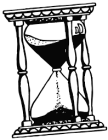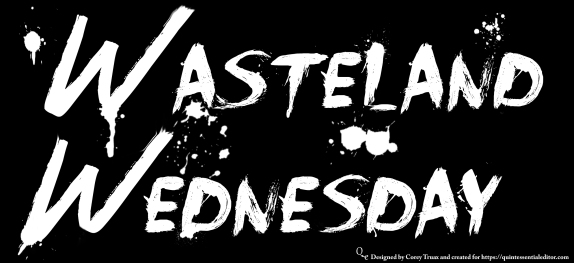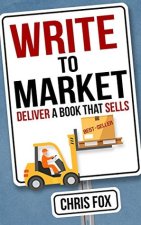
Welcome to another Feature Friday! Today we’ll cast a glow on some bloggers who are consistently generating insightful posts about the written word. As always, I try to dedicate time to broadening my understanding of the craft, and these folks seem to deliver on a regular basis. As usual, I’ll also be compiling the books I used to generate my blog posts this week into a one-stop-shop.
 The first spotlight shines for Jan, over at Writing your first novel – Things you should know. Jan is always writing informative posts and it’s a shame she hasn’t been generating more views and comments. She covers a number of different topics on her blog. She also does an outstanding job of offering examples of writing, and then showing how it can be improved through the application of the tip she is providing.
The first spotlight shines for Jan, over at Writing your first novel – Things you should know. Jan is always writing informative posts and it’s a shame she hasn’t been generating more views and comments. She covers a number of different topics on her blog. She also does an outstanding job of offering examples of writing, and then showing how it can be improved through the application of the tip she is providing.
One post she recommends (and I would agree), is her post about, On-the-nose Writing. Surprisingly, this isn’t a topic I’ve ever covered here at QE. As she points out, this is a common issue many writers grapple with. I would encourage you to swing over and give her space some love.
 The second blogger I wanted to talk about is Steve, over at Red String PaperCuts. This space is unique because it’s a collaboration between three individuals: Steve, Jessie, and Marcy. They work together to provide a range of creative content for their viewers. Depending on the day, you may find a haiku, poem, book update, musing, or solid piece of writing advice.
The second blogger I wanted to talk about is Steve, over at Red String PaperCuts. This space is unique because it’s a collaboration between three individuals: Steve, Jessie, and Marcy. They work together to provide a range of creative content for their viewers. Depending on the day, you may find a haiku, poem, book update, musing, or solid piece of writing advice.
Steve recently introduced the topic of marketing (an area where he has personal expertise). The post is titled, Marketing Your Novel: Where to Begin? For me, marketing has been an area where I have been struggling to find useful, writing specific, content. I know from the interactions I’ve had with many of you here at QE that this is a subject many of us are trying to figure out. I encourage you to swing by and sponge up some of the information they are offering. It should be noted this post is introductory, and we’ll likely see more marketing tips from them in the future.
 The last blogger I want to feature today is Thomas Weaver, over at North of Andover. Thomas is a hilarious and exceptionally knowledgeable mercenary proofreader (freelance editor). His page is almost a daily ritual for me. His “Writing Glitch” series (which is up to #156 last time I checked) snags a sentence, breaks it down, and corrects it. It’s simple, it’s often humorous (not in a mean way), and it’s a quick way to get a grammar fix.
The last blogger I want to feature today is Thomas Weaver, over at North of Andover. Thomas is a hilarious and exceptionally knowledgeable mercenary proofreader (freelance editor). His page is almost a daily ritual for me. His “Writing Glitch” series (which is up to #156 last time I checked) snags a sentence, breaks it down, and corrects it. It’s simple, it’s often humorous (not in a mean way), and it’s a quick way to get a grammar fix.
I normally point people to a specific article when I feature them. I’m not doing that with Thomas because I don’t even know where to begin. If I had a recommendation, it would be to go to his home page and check out his Grammar Rants section. If you dare, he also will take a look at an except from your story and incorporate it into his Writing Glitch series. Click here, and become a willing participant. In my opinion, you’re crazy to not accept free copyediting from someone as experienced as him.
 I wanted to take a moment to thank Jan, Thomas, and the folks at Red String PaperCuts. It’s humbling for me to be able to share other people’s work and learn from them. One of my overarching goals with creating this space was to build collaborations with other creative minds. You all are helping me achieve this goal.
I wanted to take a moment to thank Jan, Thomas, and the folks at Red String PaperCuts. It’s humbling for me to be able to share other people’s work and learn from them. One of my overarching goals with creating this space was to build collaborations with other creative minds. You all are helping me achieve this goal.

These are the resources I used this week (Friday to Friday) to create my posts. I’m a voracious eater of greens and believe in the power of self-study to improve writing skill and understanding.
Bird by Bird, by Anne Lamott [Amazon] [goodreads]
The Writer’s Journey, by Christopher Vogler [Amazon] [goodreads]
A Writer’s Guide to Active Setting, by Mary Buckham [Amazon] [goodreads]
For a more comprehensive list of books I have utilized to build content here on QE, you can refer to this post.
 That’s it for today! If you would like to be featured next Friday, contact me. It always helps if you let me know what specific post you would like to be featured. My goal with Feature Friday is to connect like-minded individuals with one another. The blogoverse is a giant place, and it’s nice to be able to provide some navigation. Until tomorrow, keep reading, keep writing, and as always – stay sharp!
That’s it for today! If you would like to be featured next Friday, contact me. It always helps if you let me know what specific post you would like to be featured. My goal with Feature Friday is to connect like-minded individuals with one another. The blogoverse is a giant place, and it’s nice to be able to provide some navigation. Until tomorrow, keep reading, keep writing, and as always – stay sharp!

 Unlike QE’s normal informational blog, Wasteland Wednesday is potentially full of foul language and post-apocalyptic nonsense. I’m talking f-bombs, thrice-bosomed mutant women, and buckets of gore.
Unlike QE’s normal informational blog, Wasteland Wednesday is potentially full of foul language and post-apocalyptic nonsense. I’m talking f-bombs, thrice-bosomed mutant women, and buckets of gore.
 When a nuclear warhead made landfall it destroyed the area, but it also left behind areas that were lousy with radiation. Areas where bombs detonated prior to making landfall became habitable over time.
When a nuclear warhead made landfall it destroyed the area, but it also left behind areas that were lousy with radiation. Areas where bombs detonated prior to making landfall became habitable over time.




 My goal is to isolate and develop tips that will allow us to reach down and grab readers by their ankles and shake out their pocket change. Matt’s post (this reblog) will be the first “Marketing” category post on QE. I plan to start populating this category with relevant and timely information.
My goal is to isolate and develop tips that will allow us to reach down and grab readers by their ankles and shake out their pocket change. Matt’s post (this reblog) will be the first “Marketing” category post on QE. I plan to start populating this category with relevant and timely information.


 There are some variables though for sure. I’ve seen book blurbs written as (1) giant quotes from the book, (2) a partial quote and partial blurb, (3) full blurb, (4) no blurb and only “stellar” reviews, (5) first person weirdness, (6) a single line of text, and (7) the list goes on.
There are some variables though for sure. I’ve seen book blurbs written as (1) giant quotes from the book, (2) a partial quote and partial blurb, (3) full blurb, (4) no blurb and only “stellar” reviews, (5) first person weirdness, (6) a single line of text, and (7) the list goes on. My question to all of you is what makes a good blurb in your opinion? If you can remember a book, and could refer it as a prime example, that would be superbly helpful (I tend to sponge style when I read). If you just tell me what the title is I can search for the blurb. This is an area where I am learning as I go!
My question to all of you is what makes a good blurb in your opinion? If you can remember a book, and could refer it as a prime example, that would be superbly helpful (I tend to sponge style when I read). If you just tell me what the title is I can search for the blurb. This is an area where I am learning as I go!


 Most of us know that only about ten percent of what we know about our universes, characters, and cultural histories make it into the book. This will allow me to share those aspects, and give me a place to compile them into a wiki of sorts.
Most of us know that only about ten percent of what we know about our universes, characters, and cultural histories make it into the book. This will allow me to share those aspects, and give me a place to compile them into a wiki of sorts.

 Example: I write post-apocalyptic fiction. So I research the market and see what is popular. Not just now, but over the last few months. I look at those books and find what the repeat elements are. Standard zombies are out, mutant zombies are in. City scenes are out, fantasy lands are in.
Example: I write post-apocalyptic fiction. So I research the market and see what is popular. Not just now, but over the last few months. I look at those books and find what the repeat elements are. Standard zombies are out, mutant zombies are in. City scenes are out, fantasy lands are in.


 Search around freelance haunts for copy editing gigs and sooner or later you are going to find a few requests for editing marketing material. These work requests are typically a mega-boring standard advert with an overly ridiculous parenthesis at the end saying, (URGENT MUST BE COMPLETED WITHIN 24 HOURS!). Don’t stress! These are (typically) short order jobs, living in 2,000 word land. They are also relatively low paying, but hey, snap enough of these guys up and you can make some quick buckaroos.
Search around freelance haunts for copy editing gigs and sooner or later you are going to find a few requests for editing marketing material. These work requests are typically a mega-boring standard advert with an overly ridiculous parenthesis at the end saying, (URGENT MUST BE COMPLETED WITHIN 24 HOURS!). Don’t stress! These are (typically) short order jobs, living in 2,000 word land. They are also relatively low paying, but hey, snap enough of these guys up and you can make some quick buckaroos.

